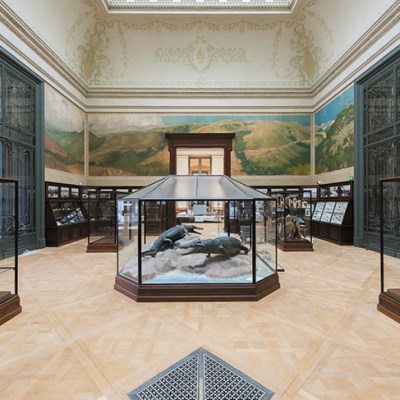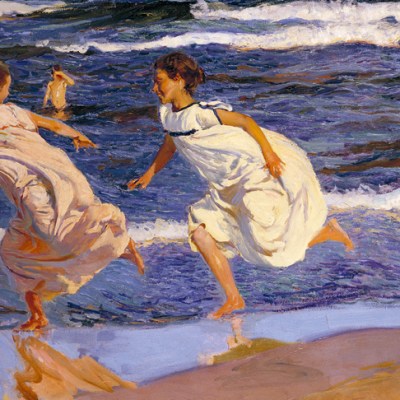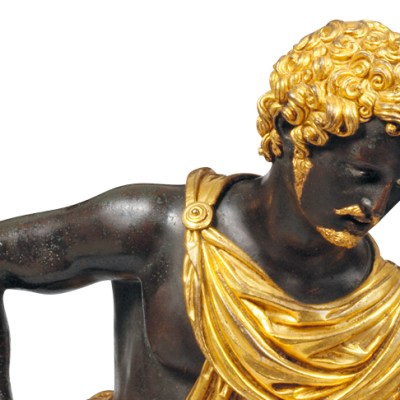If Antonio Laccabue (who later changed his name to Ligabue) ‘were to be deported to his homeland, we would feel pity for him. Naturally, he would have much greater difficulty in getting to grips with his new circumstances (language etc.) than a person of normal intellect. The social institutions are also much worse in Italy. The chances of his managing to lead a tolerable and somehow useful existence would be far greater if he were allowed to remain in Switzerland. We conclude our assessment with a recommendation that you do not initiate the repatriation procedure at least until another attempt has been made.’
Seventeen-year-old Antonio, whose birth name was Costa but who bore the name of his Italian adoptive father, Bonfiglio Laccabue, was being examined at the St Pirminsberg mental hospital in Pfäfers, in the canton of St Gallen. The experts were giving their opinion on his proposed ‘repatriation’ to Italy: ‘as a consequence of his mental instability’ he was in danger of not being able to ‘support’ himself and thus becoming a burden. However, the urgent appeal by the hospital’s director, Victor Häberlin, was to no avail. Two years later, in May 1919, Ligabue was deported from Switzerland, where he had been born in 1899. He had spent most of his life in the canton of St Gallen, growing up in the town itself and in eastern Switzerland, but he did not have Swiss citizenship.
Jaguar with gazelle and snake (c. 1948), Antonio Ligabue

Ligabue is often celebrated as the ‘Italian Van Gogh’, but the comparisons drawn between him and the Dutch painter can be problematic. The supposed connection between genius and madness is a romantic topos that cannot be eradicated, no matter how often it is disproved. Ligabue is frequently situated on the line between genius and madness. He certainly did experience disturbance: he was taken away from his mother to live with foster parents, also in difficult circumstances. He had problems at school, and was made to repeat every class at primary level, which invited mockery. At 13, he was sent to the ‘institution for mentally deficient children’ in Marbach, but had to leave in 1915. He was seen as a difficult character once in Italy, too, where he roamed the countryside, ate his soup in the poorhouse, slept in pigsties or shacks, and was repeatedly admitted to the San Lazzaro psychiatric clinic in Reggio Emilia.
Two things formed part of Antonio Ligabue’s life from the very beginning: his love of animals, and his passion for drawing. Documents from the institutions in Marbach and St Pirminsberg provide evidence of this. His foster mother wrote: ‘He has a tremendous love of animals, almost more than for people.’ She added that he was ‘only interested in and skilled at drawing; animals, in particular, he learned to draw all by himself’. None of Ligabue’s early drawings have survived; the work he is known for today was all done in Italy. Characteristic paintings include expressive depictions of animals, usually engaged in a fight for survival, and self-portraits. Ligabue is a master of multiple snapshots of the self. In these representations, he doesn’t shy away from depicting psychological disturbance – even including the scars from his self-mutilation – or superiority, as when he paints himself with his motorbike at the height of his success, or in a room decorated with one of his portraits.
Stagecoach with horses (c. 1959–60), Antonio Ligabue. Courtesy Galleria Centro Steccata, Parma

Ligabue is described as having come into contact with the ‘naïve itinerant artists of the Appenzell region’ during his time in eastern Switzerland. He is said to have visited the natural history museum in St Gallen. Perhaps he wandered through the historical collection, which was housed in the same building, and came across the work of Bartholomäus Lämmler. Was he familiar with Johannes Zülle, or the St Gallen painter Christoph Sebastian Allgöwer and his lively depictions of animals? Ligabue often painted Swiss mountain scenery, as well as the people of Appenzell in traditional costume, but never a scene in the Alpine herdsman tradition; instead, he chose the classical subject of the farmer at his plough. Ligabue used reproductions of famous works as a basis for works of his own, without necessarily having seen the originals. He repeatedly alludes to Rudolf Koller’s The Gotthard Post (1873), and his Maternity (undated) refers to The Two Mothers (1889) by Giovanni Segantini.
Ligabue’s difficult, idiosyncratic character led people to see him as alien and expel him from the country. They sent him to a ‘homeland’ that was never his, in which he was always a foreigner. In Italy he became famous, while in Switzerland hardly anyone remembers him. Yet memories of his life in Switzerland pervade Ligabue’s oeuvre: a henhouse like the institution at Marbach; a railway bridge reminiscent of the Sitter Viaduct near St Gallen; recurring townscapes and mountain village landscapes with churches or small country castles, their appearance suggestive of the Rhine valley in St Gallen, the silhouette of Marbach and Schloss Weinstein, and Pfäfers. Finally, all the inscriptions on the paintings are in Swiss German, in gothic handwriting. Ligabue consciously adopted these clichés of Swissness and used them to identify himself as a Swiss painter in Italy.
Translated from the German by Charlotte Collins
Monika Jagfeld is the director of the Museum im Lagerhaus, St Gallen. ‘Antonio Ligabue: The Swiss Van Gogh in Italy’ is at the Museum im Lagerhaus until 8 September.
From the April 2019 issue of Apollo. Preview and subscribe here.


